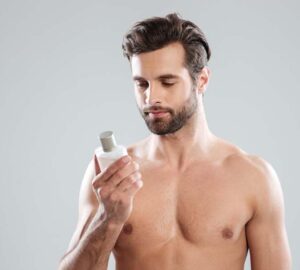Scars can be permanent reminders of past injuries or surgeries, and many individuals seek ways to minimize their appearance and promote healing. Among the myriad scar management options, vitamin E has garnered attention for its potential benefits. However, the critical question remains: “How often should you put vitamin E on a scar?” In this article, we will explore the role of vitamin E in scar healing, the correct application techniques, and the frequency at which it should be applied. We will also address potential risks, share case studies, and guide you on when to seek professional help for scar management. Whether you’re dealing with a recent wound or an old scar, this article will provide valuable insights to make informed decisions about incorporating vitamin E into your scar care routine.
How Often Should You Put Vitamin E On A Scar?
The frequency at which you should apply vitamin E to a scar can vary depending on several factors, including the type of scar, its age, and your individual skin’s response. Here are some general guidelines to consider:
New Scars (Less Than 6 Months Old): For recent scars, it’s typically recommended to apply vitamin E once daily. You can do this by gently massaging a small amount of vitamin E oil or cream onto the scar. Make sure the scar is clean before applying.
Older Scars (Over 6 Months Old): Older scars may benefit from less frequent application, such as 2-3 times a week. Vitamin E can still help promote overall skin health and hydration, but the scar may have already undergone most of its healing process.
Individual Response: Pay close attention to how your skin responds to the treatment. If you notice any irritation, redness, or worsening of the scar, consider reducing the frequency of application or discontinuing its use. Not everyone’s skin reacts the same way to vitamin E, so it’s crucial to monitor your specific results.
Consult A Healthcare Professional: It’s essential to consult with a dermatologist or healthcare provider before starting any scar treatment regimen. They can assess your scar’s specific characteristics and recommend an appropriate frequency and type of treatment based on your unique needs.
Other Scar Management Techniques: While vitamin E may help with scar management, it’s not the only option available. Consider combining vitamin E with other scar management techniques, such as silicone sheets, corticosteroid creams, or laser therapy, as recommended by your healthcare provider.
Consistency: Regardless of the frequency you choose, consistency is key. Regular, gentle application of vitamin E can have a cumulative effect over time. Make it a part of your daily or weekly skincare routine to see potential benefits.
Sun Protection: Protecting your scar from the sun is crucial. UV radiation can make scars more noticeable and delay the healing process. If you’re applying vitamin E during the day, consider using a sunscreen with high SPF on top to shield the scar from UV rays.
Duration: Scar healing is a gradual process, and it can take several months or even years for a scar to mature and fade significantly. Be patient and give your chosen scar management regimen, including vitamin E, ample time to show results.
How To Apply Vitamin E To Scars?
Applying vitamin E to scars requires a careful and gentle approach to ensure the best results. Here’s a step-by-step guide on how to apply vitamin E to scars effectively:
Clean The Scar Area:
Before applying vitamin E, ensure that the scar and surrounding skin are clean and free of dirt, oils, or makeup. Use a mild, unscented soap and lukewarm water to cleanse the area. Pat it dry gently with a clean towel.
Choose The Right Vitamin E Product:
Vitamin E is available in various forms, including oils, creams, and capsules. You can select the product that suits your preferences and skin type. Common choices include vitamin E oil and vitamin E cream. Ensure that the product is specifically intended for topical use on the skin.
Perform A Patch Test:
If you’re using a new vitamin E product or have sensitive skin, it’s a good idea to perform a patch test. Apply a small amount of the product to a discreet area of your skin (like the inner forearm) and wait 24-48 hours to check for any allergic reactions or irritation.
Apply A Small Amount:
Using clean fingers or a cotton swab, apply a small amount of the vitamin E product directly to the scar. You don’t need to use a large quantity; a little goes a long way. Start with a conservative amount to avoid over-application.
Massage Gently:
With clean hands, gently massage the vitamin E product into the scar using circular motions. This helps improve circulation and ensures that the product is evenly distributed. Be careful not to apply excessive pressure, especially if the scar is still sensitive.
Consider Covering:
If desired, you can cover the scar with a clean bandage or dressing. This can help keep the vitamin E in place and prevent it from rubbing off onto clothing. However, it’s only sometimes necessary, and you can skip this step if you prefer.
Repeat As Needed:
The frequency of application can vary depending on the age and type of the scar. For newer scars, the once-daily application is standard, while older scars may benefit from 2-3 times a week. Follow your healthcare provider’s recommendations or the product instructions for guidance.
The Benefits Of Vitamin E On Scar
Vitamin E is often touted for potential benefits in scar management and skin health. While the effectiveness of vitamin E on scars can vary from person to person, there are several potential benefits associated with its use:
- Moisturization And Hydration: Vitamin E is known for its exceptional moisturizing properties. When applied to scars, it can help prevent the skin from drying out, which is crucial for effective scar healing. Well-hydrated skin is more flexible and less likely to form tight, uncomfortable scars.
- Antioxidant Protection: Vitamin E is a potent antioxidant that helps protect the skin from damage caused by free radicals. Free radicals are unstable molecules that can lead to inflammation, tissue damage, and slower healing. By neutralizing free radicals, vitamin E can reduce inflammation and oxidative stress around the scar.
- Collagen Production: Collagen is a crucial protein in skin health and scar formation. Vitamin E may stimulate the production of collagen fibers in the skin. This can contribute to better scar tissue formation, making scars appear softer and less raised.
- Reduction Of Hyperpigmentation: Scars often exhibit hyperpigmentation, resulting in dark or discolored areas. Vitamin E has been suggested to help fade hyperpigmentation over time, leading to a more uniform skin tone and a less noticeable scar.
- Anti-Inflammatory Effects: Inflammation is a natural part of wound healing, but excessive or prolonged inflammation can contribute to scar formation. Vitamin E’s anti-inflammatory properties can help calm the skin and minimize redness and irritation around the scar.
- Improved Skin Texture: Regular application of vitamin E can soften the texture of scars. This may make scars feel smoother to the touch and reduce their rough or uneven appearance.
- Enhanced Blood Circulation: Massaging vitamin E into the scar can increase blood circulation in the area. Improved circulation may aid in delivering nutrients and oxygen to the skin, which can benefit scar healing.
- Prevention Of Keloid Formation: Some studies have suggested that vitamin E may help prevent the formation of keloid scars, characterized by raised and often larger-than-original-injury scars. By promoting proper collagen formation, vitamin E may discourage excessive scar tissue growth.
Potential Risks And Precautions
While vitamin E can offer potential benefits for scar management, it’s important to be aware of potential risks and take necessary precautions when using it on scars. Here are some key considerations:
Not everyone’s skin responds similarly to vitamin E. Some individuals may be sensitive or allergic to vitamin E products. Before applying vitamin E to a scar, test a patch on a small, inconspicuous area of your skin. Wait 24-48 hours to check for any signs of irritation, redness, or allergic reactions.
In some cases, vitamin E can cause skin irritation or itching, mainly if applied excessively or on broken skin. If you experience any discomfort or adverse reactions, discontinue its use and consult a healthcare professional.
Vitamin E is an oil-soluble vitamin, and some formulations, such as vitamin E oil, can be pretty oily. If you have acne-prone skin or are using vitamin E on the face, be cautious, as excessive oiliness may exacerbate acne or lead to breakouts. Consider using non-comedogenic (non-pore-clogging) vitamin E products if acne is a concern.
Applying too much vitamin E too often can have adverse effects. It’s important to follow the recommended guidelines for application frequency and quantity. Overuse may not lead to better results but could lead to skin issues.
While vitamin E can aid in scar healing for many individuals, applying vitamin E to wounds still in the early stages of healing might slow down the process. Avoid using vitamin E on open wounds or fresh incisions without consulting a healthcare professional.
Vitamin E may not significantly improve all types of scars or individuals. Its effectiveness can vary based on scar type, age, and skin type. If you don’t see noticeable improvements after consistent use, consider other scar management options.
Vitamin E does not offer sun protection by itself. Applying vitamin E to scars exposed to sunlight without sunscreen can worsen the appearance of scars and increase the risk of hyperpigmentation. Always use sunscreen with a high SPF when exposing scars to sunlight.
It’s essential to consult with a dermatologist or healthcare provider before starting any scar treatment regimen, including vitamin E. They can assess your scar and skin condition, provide personalized advice, and recommend the most appropriate treatment options.
Conclusion
Vitamin E can be a valuable addition to your scar management regimen, offering a range of potential benefits such as moisturization, antioxidant protection, collagen production stimulation, and reduction of hyperpigmentation. Its anti-inflammatory properties can help soothe scarred skin, and regular use may improve skin texture over time. However, it’s essential to approach vitamin E application to scars with caution and awareness of potential risks. Skin sensitivity, irritation, breakouts, and delayed healing are possible concerns, mainly if misused. Overuse or the application of vitamin E to open wounds should be avoided.
FAQ’s
Can I Apply Vitamin E To Open Wounds Or Recent Incisions?
It’s generally only recommended to consult a healthcare professional before applying vitamin E to open wounds or recent incisions. Vitamin E should be used on scars that have already begun to heal.
Can Vitamin E Altogether Remove Scars?
Vitamin E may help improve the appearance of scars, making them less noticeable over time. However, complete scar removal is often impossible, and results can vary. A combination of scar management techniques may be necessary for the best outcome.
What Are The Signs Of An Allergic Reaction To Vitamin E?
Signs of an allergic reaction may include redness, itching, swelling, or developing a rash at the application site. If you experience these symptoms, discontinue use and consult a healthcare professional.




